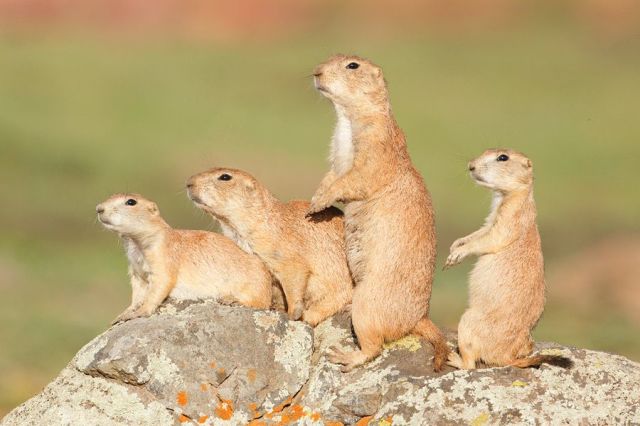Up to 15 inches long, the prairie dog is related to the squirrel. And this mammal is all about family time. Prairie dog family groups, which contain up to 26 individuals, share food, groom each other, and even greet one another with nose-to-nose nuzzles.
Prairie dog families live with hundreds of others in networks of tunnels dug below North America's grasslands. Most of these communities, called dog towns, cover less than half a square mile. But one in Texas stretched a hundred miles.
The animals' sharp claws make them expert diggers. They also have excellent vision and hearing, which allow them to easily detect predators such as coyotes and snakes when aboveground. Once a prairie dog senses danger, it alerts others by barking. It even uses different barks for different enemies.
When hungry, prairie dogs emerge from their tunnels to forage for food. Using their sharp teeth, they act like little lawnmowers, trimming and gulping down grass. Outside, they also have some fun: Prairie dog pups enjoy romping around their burrows. Talk about party animals.

